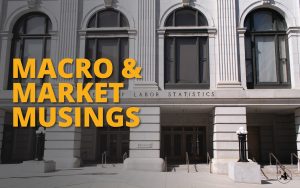Comments based on information available as of 5:45am CT on 9/12/2025
Growth: Not As Strong As We Thought We Were 
The Bureau of Labor Statistics’ preliminary benchmark revisions showed the labor market wasn’t as strong as originally thought back in March. It all likely started during the growth slowdown in Spring 2024. Fewer businesses were probably starting and more were closing than the BLS originally guessed. Published data are often a very imperfect reflection of what’s actually happening. Investors care more about earnings and guidance than whether the level of employment in March 2025 was higher or lower than originally reported. Those are looking solid even if the labor market wasn’t.
Inflation: Nothing To See Here, Yet
The producer price index for August was better than expected and the consumer price index was in line with expectations. Neither show signs that tariff induced inflation is raging out of control. It’s more like a slow simmer. Some of it will show up in import prices, some in business costs, and some in consumer prices. The way it gets spread out–how quickly and how acutely–depends on the specific product.
Policy: Getting Off On The Right Foot
The markets are pricing in a near certainty that the Fed will cut its policy rate on Wednesday. The market is also pretty sure this is the first of a few cuts. Don’t expect any clear signal from the Fed that it intends on starting a sequence of cuts. It will likely want to at least say it is going to keep its options open.
Looking Ahead: Mind The Multiples
When searching for investment opportunities, investors should give great deference to market prices. Market prices reflect a lot of information, but they also react to flows and feelings. Even if the fundamentals generally look fine, what investors pay for those fundamentals–market multiples, or “valuations”–might not be fine. Recent growth and strong profit margins can both justify high market multiples, but those valuations can highlight vulnerabilities. A little growth hiccup or crimped margins can create risks that need to be navigated.